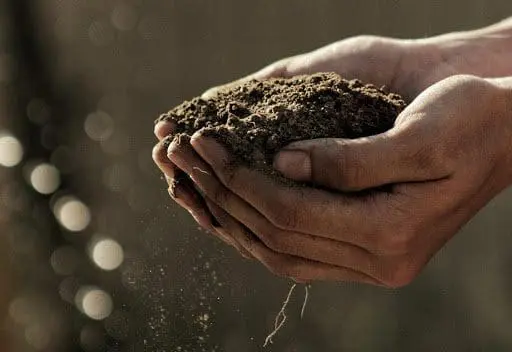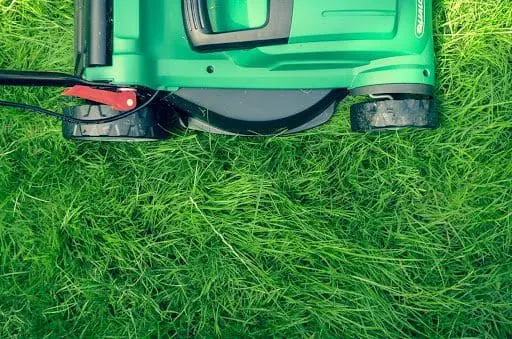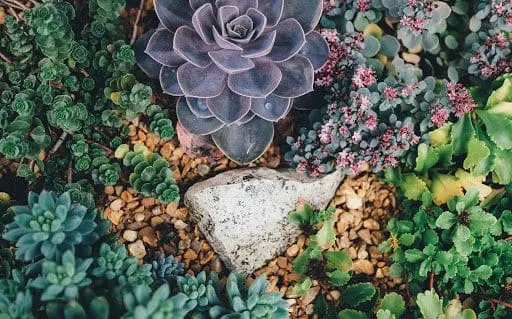Did you know that, according to the Deep Roots Project, homeowners use up to 10 times more chemical pesticides per acre on their lawns than farmers use on crops? We are conditioned to thoroughly wash our fruit and produce from the supermarket. Yet, it’s second nature to let your pets or children roll around in your front and backyard. Pests, weeds, and healthy grass aren’t as challenging to control as we think they are.
The truth is it’s often too easy to grab that 20-pound bag of fertilizer and pesticide product from the shelf of your local lawn and garden store. Yet, it’s just as easy to care for your lawn organically. Organic lawn care is not the huge undertaking that you think it is. When you’ve hit your stride, you’ll wonder why you ever relied so chemical based weed killer, lawn fertilizer, and other weed control measures. We compiled a list of 10 easy organic lawn care tips to get you started.
Let Your Grass Work for You
A healthy lawn is a grassroots effort, literally. The lusher and more prolific your grass it, the less space weeds have to grow. A yard full of healthy grass is one that is seeded with grass seeds that are appropriate to the region you live in. Indigenous grass flourishes much easier and with less effort than the popular Kentucky bluegrass.
Speak to local horticulturists and friends and neighbors with avid green thumbs—they’ll tell you what grass to plant.
Plant a Variety of Grasses
The adage “don’t put all of your eggs in one basket” is also true for your yard. Don’t just plant one variety of grass. Instead, choose a combination of regional grass seeds so if disease hits one strain you’ll still have the others who can pick up the slack.
Work from the Ground Up

Ensure you have a good amount of healthy soil for your grass. Most professionals recommend at least 4-8 inches of soil. Furthermore, ensure you aerate the soil if you’re working from scratch. New grass will have to work harder to sink deep roots into compacted soil.
Organic Lawns Are Taller
Depending on where you live, you may be used to seeing rows and rows of closely cropped lawns and cookie-cutter houses. While that closely-shaved look might be the in-thing in suburbia, it simply won’t cut it for an organic lawn.
Instead, you’ll want to set your mower blade to keep your grass at least 3 inches high. To put it simply, since you’re not throwing a ton of fertilizer on your yard your grass will need more sun, which means it needs to be taller and has a broader leaf. Taller grass also blocks weeds from growing.
Perform Regular PH Tests
About once a year you should perform a pH soil test on your lawn. This test will tell you the acidity of the soil, which is an important step to understanding how happy your grass is. You can perform your own test or hire a professional, who will not only perform the test but take the necessary measures to correct your soil.
If you do the test yourself, a pH below 6.0 means you need to introduce lime into your yard. A pH above 7.0 means you need to add gardener’s sulfur.
Sharpen Your Mower Blades

Whether you use a local company to sharpen your blades or do it yourself, a sharp set of mower blades will make your lawn much happier. Think about cutting a tomato with a dull kitchen knife—you’re essentially just ruining it by smashing it with a blunt piece of steel. That same thing happens at a much smaller level with your grass.
Would your grass be happier if it got a haircut or a bludgeoning? The sharper the cut, the better your grass is going to look.
Where Are You Going with Those Clippings?
Anyone who thinks grass clippings are unsightly hasn’t left them alone for a day or two. You would be surprised by how quickly clippings diminish, almost becoming imperceptible, after just a little bit of time in the sun. Moreover, grass clippings decompose, adding back nitrogen and other nutrients to your soil. They also help stifle the growth of weeds.
If You Must Fertilize, Go Organic
Some of us simply don’t live in a region that is conducive to the growth of grassy lawns. With that said, we need a little help keeping our yard lush and green. If you must, go with an organic fertilizer. This will keep your local ecosystem free of pollutants and make your yard a safe place for children, pets, and the local wildlife.
Sometimes Grass is Whack

Our immediate go-to when we think of a yard is grass. However, you may live in an area where grass doesn’t do well. Yes, you can use organic fertilizers, non-organic chemicals, and pretty much force that grass into existence… but you can also admit to yourself that grass isn’t the end-all, be-all component to a beautiful yard.
Have you heard of Xeriscaping? You’ve undoubtedly seen it without knowing it had a name. To put it simply, the process of xeriscaping is to create a yard or landscape that needs no supplemental water. Go ahead for the term and find some grass-free inspiration for your yard.
Find a Local Organic Lawn Care Service
Lastly, some of the best advice to give an overwhelmed homeowner is to leave it to the professionals. A Professional organic lawn care service will provide you with a tailored strategy to get your yard going, bring it back from the brink, or simply maintain its health. If you don’t have the time but have the money, then this is often a great solution to enjoy the spoils of a perfectly maintained yard without doing the backbreaking work.
Earth Development is a leading provider of professional landscaping services. For more than 20 years, we’ve provided industries of all types with individualized solutions for landscape renovation, lawn maintenance, and more.
For more information, to get a free quote, or to speak to one of our friendly team members, don’t hesitate to get in touch! You can get a quote online, or give us a call!
